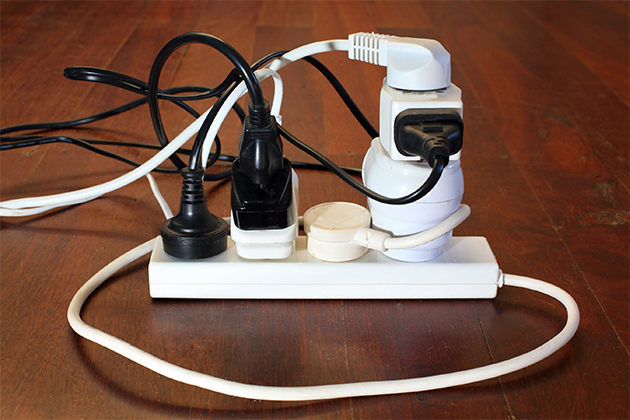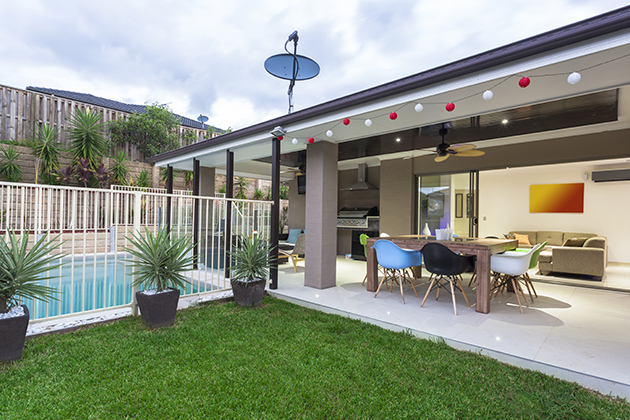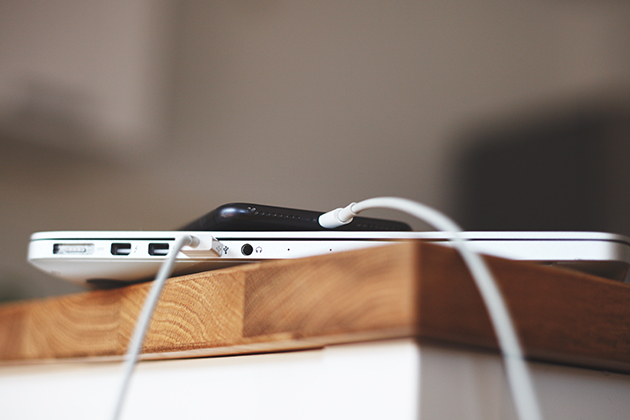20 May, 2020 By: Vanessa Pogorelic
The number of fires that start in and around the home is declining in Western Australia, but the risk remains, and the causes are changing.
Driving past the remnants of a suburban home that has been gutted by fire, where adjacent properties stand untouched, is a stark reminder of the relentless and indiscriminate nature of house fires.
Within minutes, a fire inside a home can engulf it completely, taking lives or, at the very least, destroying what has taken a lifetime to create.
Fortunately, since 2001 there has been a downward trend in the number of structure fires attended by emergency services in Western Australia. In the 10 years to 2018, there was a 14 per cent decrease.
Some of that decline is due to more reliable hard-wired smoke alarms which have enabled small fires to be contained by the householder before they spread, along with split system air conditioners replacing portable heaters.
But as the layout of our homes and the things we put inside them has changed, the causes and origins of house fires have also shifted.
In the past, it was open fireplaces, misplaced candles and bar heaters that were among the most common causes of fires that originated in and around the home.
Today, some of the more common household fire sources can be less obvious than a burning log falling from a fireplace.
In 2018, electrical faults accounted for the highest number of house fires in WA, according to the Department of Fire and Emergency Services (DFES).
“Candles, fireplaces and bar heater fires are a thing of the past,” says Peter Jones, district officer of fire investigation and analysis at DFES. “Batteries and electrical appliances are some of our biggest problems at the moment and there are more and more appliances around your home that use rechargeable batteries - your phone or laptop, power-tools, lawnmowers.”

Safely charging your devices
Jones says any rechargeable battery, big or small, can be a risk if mistreated or charged incorrectly.
Rechargeable batteries, especially lithium-ion batteries, can pack a lot of power into a small package so they should always be handled with care.
An impact which is powerful enough to damage the exterior of the battery could cause the chemicals inside to generate excessive heat leading it to ignite. Dropping one repeatedly could be enough to trigger this reaction.
With many different battery chargers in the home, it can be tempting to use them across multiple devices.
Jones warns that using batteries and chargers not specifically designed for a device can be a risk.
“You should only use chargers that have been approved for use with that device and only use the approved batteries.”
He also cautions against buying rechargeable batteries online from retailers located overseas as they could be of low quality.
RELATED:
How to reduce fire risk from your devices »
Backyard blazes
Fires caused by faulty or mistreated appliances continue to be among the leading causes of house fires, and appliance fires aren’t just confined to the inside of our homes.
In WA, our love of the outdoors has led to an increasing number of ‘alfresco kitchens’ which are used year-round, including across the winter months with the aid of outdoor heating devices.
“As we’ve increasingly moved our indoor living spaces to the outside of our homes, the areas of fire risk have also spread,” says RAC Insurance Home Claims Manager, Glen Walker.
Outdoor kitchens, which incorporate larger barbeques, are becoming more common, says Walker.
“Unlike the old-fashioned brick barbeque which used to be down the very back of the yard, we’re now locating them even closer to the back of the home.”
Walker says fire risks around barbeques often arise due to a lack of cleaning and general maintenance.
“People tend to treat their outdoor cooking area with less care or caution than the kitchen inside their home. The message here is to ensure you clean in and around your barbeque regularly.
“The kitchen remains one of the main areas where fires originate in the home, most often from unattended cooking, so you shouldn’t let your guard down just because you’re cooking outside.”

The risk from 'spare' fridges
Another appliance creating problems when placed outside the home is the refrigerator.
In the past, where a refrigerator may have been used until it broke down and was then replaced, today it’s often kept as a spare fridge, says DFES’s Peter Jones.
“A fridge might be replaced while it’s still relatively new and in working order with an even newer, possibly bigger model. But the old fridge is kept and then placed outdoors in an entertainment area and that’s where it can overheat. Also, the coolants they use now in the newer fridges are more flammable than in old fridges.
“A lot of fires we attend are started by fridges in carports.” Jones says that, while there has been a steady decline in serious house fires, new household devices and changes in consumer habits have created new risks that everyone should be aware of.
“The general advice is that you should always turn off appliances that you’re not using. You don’t want to leave an outside light on for days. Use timers if you need lights on while you’re away.
“The fact is, the longer you leave something on, the more chance there is of it getting hot and failing.”
Other fire hazards you could miss
Linseed and other oils commonly used to treat wooden outdoor furniture can self-ignite. This means they don’t even need an ignition source to catch fire. If you leave oily rags bundled up in a ball, enough heat can build up inside to set them alight. Spread oil-soaked rags out and leave them to dry before disposing of them.
Overloading or piggybacking power boards with other power boards or double adaptors is hazardous. Dusty power boards are also a hazard if dust enters unused points and there is an electrical fault. Choose power boards with safety covers that close off any unused points.
Clean the lint filter in your clothes dryer before every load and make sure there is a good amount of space around the dryer for ventilation. Never turn the dryer off and open the door before it has gone through its cooldown period.
If you have halogen downlights make sure any insulation material in the roof is well away from the light and transformer. You should consider replacing halogen downlights with safer LED lights.

Keeping rechargeable devices safe
Treating the rechargeable devices in your home with care and charging them correctly will help keep them in safe working order.
Repeatedly dropping a rechargeable battery or exposing it to an impact that could physically damage it could create a fire risk.
Using chargers and batteries that are not supplied or recommended by the device manufacturer should also be avoided.
When charging a laptop or phone, always leave it on a hard surface. Don’t, for example, charge a device on a bed or couch.
Keep devices and chargers away from anything flammable while they’re charging and avoid leaving devices on charge while you’re away from home.
You should also avoid overcharging or keeping devices with rechargeable batteries plugged into mains power.
Don't forget to look after your smoke alarms
Smoke alarms should be tested monthly and completely replaced every 10 years.
Alarms need to be located in all sleeping areas of the home and in all paths of travel between sleeping areas and exits to the open air.
It’s possible to have interconnected or linked smoke detectors which sound an alarm on all devices once one unit is triggered, to ensure the alarm is heard in all areas of the home.
Is your home & contents covered in case of a fire?
Join Canstar’s most satisfied home insurance customers for four years running. Trusted insurance for the things you love.
Disclaimer: Issued by RAC Insurance Pty Limited. Check the PDS & TMD at rac.com.au.
